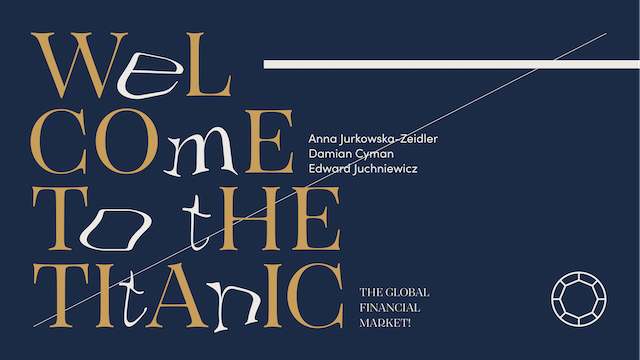
"Exploring the interactions of law, regulation, financial markets and financial institutions"
The Law and Financial Markets Project unites UG Law Faculty: Finacial Law Departament specialising in the law and regulation of financial markets. It provides a framework for co-operation with associated participants from outside academia to explore the interactions of law, regulation, financial markets and financial institutions, principally within the EU.
If global economy were a ship, it could be called the Titanic. It is fated to run into a crisis. An experienced seaman at the helm knows that the longer a streak of economic growth lasts, the more likely it is that a crash will occur. The question is only whether it will be just a shoal, or an iceberg. In other words, is the crisis just a “market disturbance,” or heralding something larger? “Something larger” most commonly takes the form of a speculative bubble, a state of market agitation during which investors overestimate the value of particular goods or financial instruments. History shows that these can be tulips, stock of inland canal building firms, railways or real estate. Global capitalism is entering a new era. World trade is no longer regulated by the logic of supply and demand, but enormous waves of capital that follow alternating states of panic and frenzy. The story of the free market is a tale of increasing larger speculative bubbles and increasingly more painful crashes, usually preceded by some turning point.
In the EU, the financial crisis showed that financial supervision varied from one Member State to another. It was too lax in some countries and stringent in others. These systems differed widely from one another. Europe was also in the grip of a peculiar banking nationalism. By changing prudence and institutional regulations, foundations were laid for a new financial safety net, defined as a set of regulatory and institutional solutions to prevent the financial system from becoming unstable.
The new regulatory and supervisory changes transfer more powers to the EU and enhance the process towards the federalization of financial market law.
The new model of EU financial market law is based on four components:
- the introduction of supervisory bodies at EU level;
- a higher degree of harmonization through the introduction of a pan-European rulebook;
- greater consistency in the application of EU regulations;
- the transfer of direct supervisory powers over market actors to EU regulatory agencies.
Financial market regulation and supervision dilemmas:
- should financial supervision be integrated across the EU?
- should depositors be protected on a national basis?
- does the federalization of financial market law ensure the market’s safety?
- what should be the role of the European
https://www.researchgate.net/publication/346972611_SEA-SEE_PERSPECTIVE_ON_LAW
https://www.researchgate.net/publication/346972591_THE_ARCHITECTURE_OF_THE_EUROPEAN_FINANCIAL_MARKET_LEGAL_FOUNDATIONS
https://www.researchgate.net/publication/346972732_The_Financial_Stability_Mandate_of_the_Narodowy_Bank_Polski_A_Constitutional_Perspective
https://www.researchgate.net/publication/346972732_The_Financial_Stability_Mandate_of_the_Narodowy_Bank_Polski_A_Constitutional_Perspectivehttps://www.researchgate.net/publication/346972732_The_Financial_Stability_Mandate_of_the_Narodowy_Bank_Polski_A_Constitutional_Perspective
https://www.academia.edu/41990885/BANK_TAX_IN_POLAND_EFFICIENCY_AND_IMPACT_ON_FINANCIAL_STABILITY
